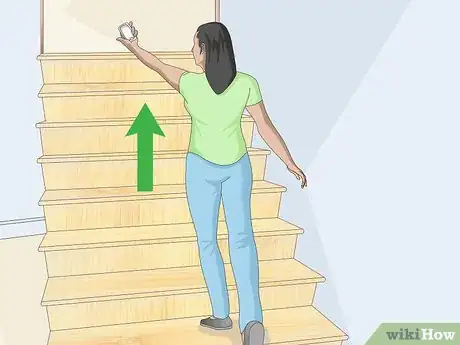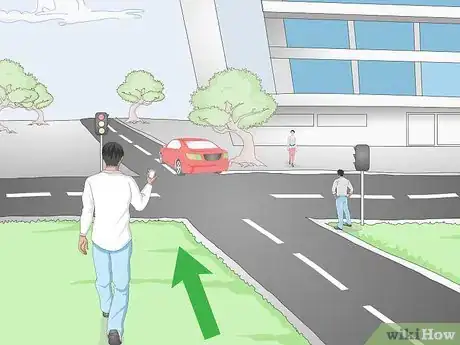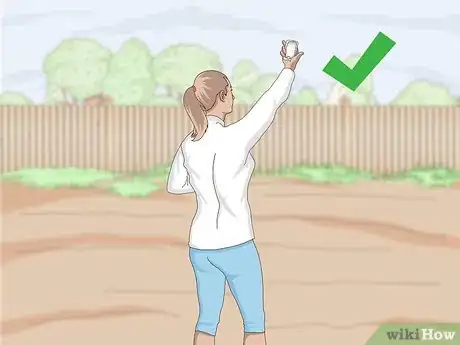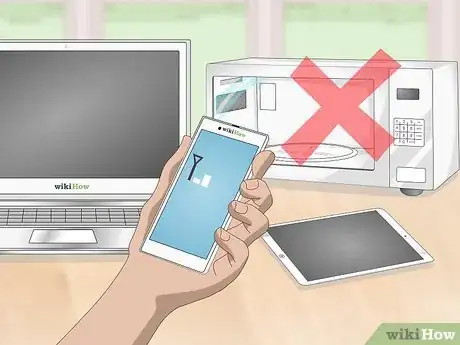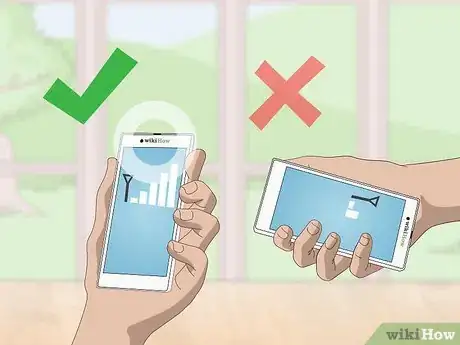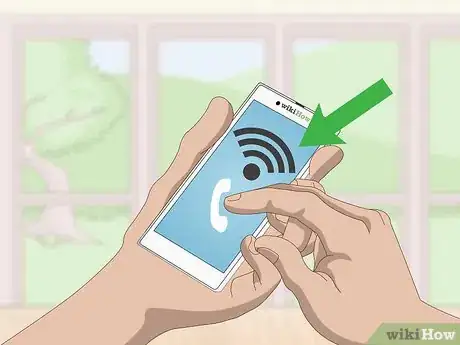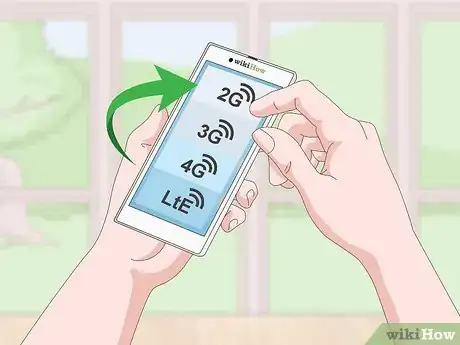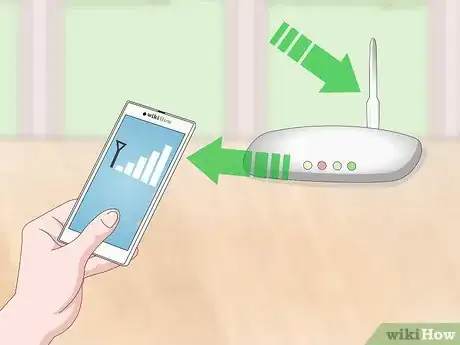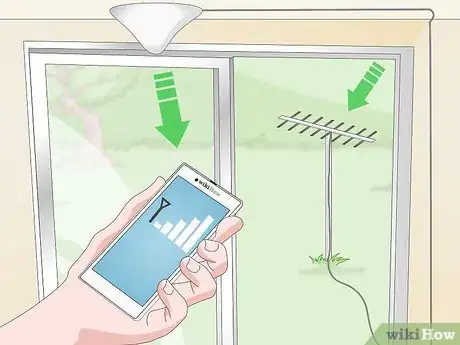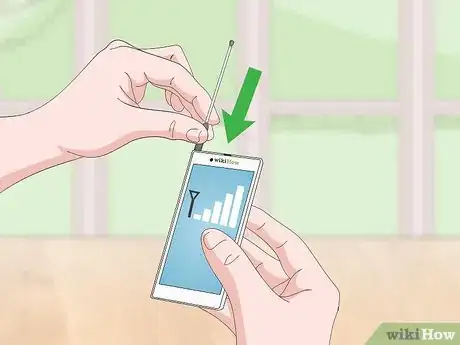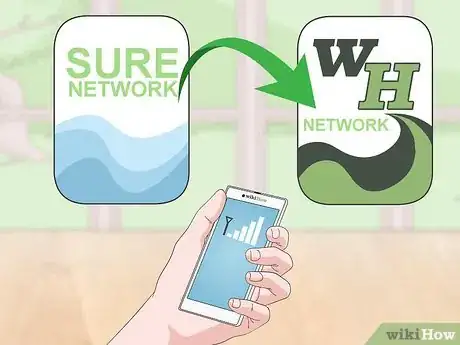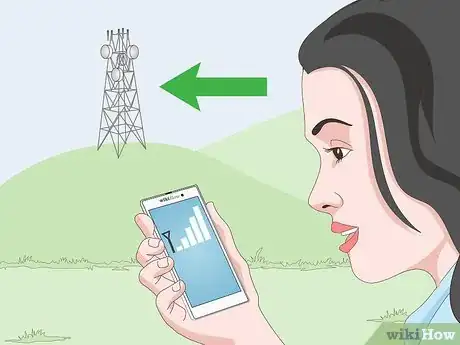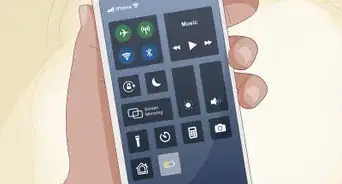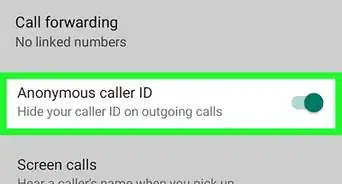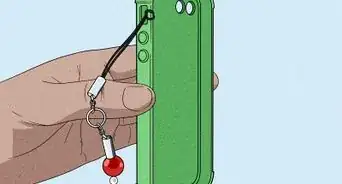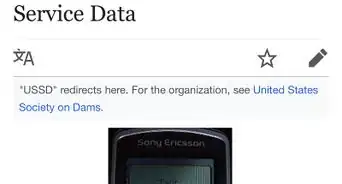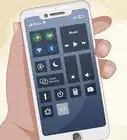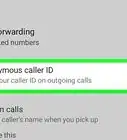wikiHow is a “wiki,” similar to Wikipedia, which means that many of our articles are co-written by multiple authors. To create this article, 58 people, some anonymous, worked to edit and improve it over time.
wikiHow marks an article as reader-approved once it receives enough positive feedback. This article has 11 testimonials from our readers, earning it our reader-approved status.
This article has been viewed 2,184,222 times.
Learn more...
Over the past 20 years, cell phone ownership has increased massively, to the point where over 90% of the world's population has cell phone coverage. [1] Unfortunately, this doesn't mean that reception is getting better and better, and most users think there is nothing they can do to improve their cell phone reception by themselves. This isn't always true, and the following will explain what you can do to ensure improved mobile coverage without waiting for a new tower to magically appear.
Steps
Positioning Yourself for Better Reception
-
1Increase your elevation. To get more signal, you need to either get higher in elevation so as to be clear of obstructions or move around the obstructions that are present. Some deem this the "Lion King" method, where you hold up your phone in midair like Rafiki held up baby Simba. Beyond this, if you're at the bottom of the hill, start climbing. Reception may be better higher up.
- Not all phones are made the same. Some are very good at using low phone signals and some are absolutely terrible. Ask other people what works best for your signal supplier.
- Know where your local cell phone provider is so you can point your phone nearer to that area and eliminate the possibility of needless obstacles between the signal and your phone.
-
2Try moving outside or to a window. Don't bother trying to make calls from deep inside buildings or underground. Buildings and other large structures are very unfriendly to an adequate cell phone signal. If you are having reception problems on the street, try walking to the nearest intersection, as there you may find better coverage.
- Cellular band radio waves do not effectively penetrate earth. If you’re underground, you will likely receive no signal.
- In addition, try downloading a signal map tool for your smartphone. These typically work by pointing the user in the direction of their nearest cell tower and can be extremely effective in locating better coverage.
Advertisement -
3Get to an unobstructed location. Today's cell phones are digital and thus more sensitive to a clear signal. Essentially, think of the "best reception" in your line of sight. Even if you can't literally see the cell tower, what's the clearest path toward an open area?
- Also, remember that the signal can be reflected, so what reception you do get is not just subject to what is in the way, but also what it is bouncing off of. Just because you are in a clear field doesn’t mean you will get reception if you are in the shadow of a water tower.
- Beyond that remember that not all cell towers serve all cell providers.
Taking Easy Action
-
1Keep your phone away from other electronic devices that might interfere with your reception. These include laptops, iPads, microwaves and other electronics. Turn the Wi-Fi and Bluetooth off, too, and see if that helps devote more of your phone's resources to finding a signal.
- Turn off these other devices if possible. If that doesn't work, consider turning your phone off too and turning it back on again shortly thereafter. Sometimes a little reboot solves just about any problem.
-
2Try to keep your battery charged to 2 bars or higher. Your cell phone uses a lot more power when connecting a call than when it is on standby. Often, your battery can be strong enough to attempt a call, but not strong enough to find a signal. If you find you are having signal problems, consider your battery and get to charging.
-
3Hold your phone correctly. Mobile phone antennas are designed to project a signal outward, perpendicular to the long axis of the antenna. As such, mobile phones seek signals in a donut-esque shape around the antenna. Normally, when a mobile is held upright, this is not a problem. However, if you are holding your phone in a strange way, such as on its side or upside down, you will hinder the operation of the antenna. Hold your phone upright to guarantee that your phone can "see" your carrier signal.
- On most newer phones the antenna is located at the bottom of the phone, so if you are experiencing signal problems on a newer phone turning it upside down will boost your signal.
- On older phones, the antenna can usually be located on the rear upper area of the phone (near the camera).
-
4Use Wi-Fi as your cell phone signal. Make calls and connect to internet from your phone as normally you would. If your mobile phone supports UMA, you can use Wi-Fi as your cellphone signal where you don't get GSM signal coverage or areas with poor coverage. There are also some apps that are free to download, such as Viber, which uses Wi-Fi.
- Not all devices and carriers support UMA calls. Some Blackberry, Androids and a few other phones support UMA, and it is becoming more and more common as technology improves.
Making Technological Changes
-
1Try switching to a 2G network. 4G and 3G are designed to deliver high bandwidth to cellphones; however, the distance between the transmission tower and the cellphone must be within a certain range of each other to be effective. The farther away you are away from one, the weaker the signal is going to be. If it is absolutely important for you that you can be reached for calls and texts, consider switching your phone to a 2G network instead. 2G offers a lower bandwidth than their newer counterparts but in turn you will have decent coverage in most places, especially where 3G/4G signals can't penetrate very well.
- Imagine in between dense housing or enclosed spaces. Because of the lower data rate, 2G signals are able to get to hard to reach places. The only downside is that your internet connection won't be as fast. At any rate it is perfectly usable for calling and texting.
- To top it all off, your battery will not drain as fast since 2G doesn't require that much power. Consult your manuals of your phone on how to enable 2G networks.
-
2Utilize a Smart Signal Booster. A new category of Smart Signal Booster is emerging. This new category of boosters utilizes super-powerful baseband processors to clean the signal before it is rebroadcast. (Hence the "Smart" in the name Smart Signal Booster.) Most of the Smart Signal Boosters have gains of 100db (compared to analog booster's gain of 63db to 70db.) That's a 1,000 times to 2,500 times the difference.
- Some of these new boosters, while more expensive than the traditional analog booster, are completely plug and play: you plug them, and they usually work right away without the need for complex installation of outdoor antennas (usually the donor antenna is inside the booster box). Truly plug and play, they can be used with almost any carrier, require no installation and actually work. Most of the time, Smart Signal Boosters are carrier-specific. (i.e. you need to get the one that works for your carrier.)
-
3Install a cellular repeater. If you are having cell problems in one location, such as your home or office, then try installing a cellular repeater. Cell phone repeaters pick up low cell signal with an antenna, boost the signal and broadcast it over the coverage area. They typically need at least 2 bars of signal where the antenna is placed (usually outside or on the roof) but can substantially improve cell reception, as well as battery life and data download speeds.
- Some repeaters might need technical knowledge such as the frequency of your carrier, and only work for one service provider. For a less technical approach that improves reception on all carriers, use a dual-band cell phone repeater.
-
4Upgrade your antenna. A few cell phone manufacturers make a "Hi-Gain" antenna for their handsets, which may be changed in-store or by the user at home. Although these won’t improve signal as much (or at all) as a repeater these antennas are relatively inexpensive and you are not confined to one location.
-
5Change networks. Most networks operate independently of one another, using their own frequencies and constructing their own cell phone towers. Chances are if the signal is bad with one network you can improve by switching. Most cellular networks these days allow you to transfer your phone number when you change providers.
- Some carriers will offer you a great deal if you're a new customer. Big companies are running out of newbie customers, so they have to look to customers from their competitors. Search around for who has the best service in your area and who is offering the best deals.
-
6Host a cell site. This may take time, but where cell phone reception is inadequate, property owners can host small cell sites on their properties for major wireless carriers. 3rd parties with Wireless Revenue Programs allow you to register your property to be eligible. Then when there is carrier interest in the area you'll be on the short list of places they choose from and will have optimal coverage.
- They may even pay your phone bill. What's not to like?
Community Q&A
-
QuestionIs steel roofing and siding more detrimental to cell reception than other building materials?
 Community AnswerBuildings with a lot of steel can interfere with signals because the steel causes the signal to bounce around and not always make it to your phone.
Community AnswerBuildings with a lot of steel can interfere with signals because the steel causes the signal to bounce around and not always make it to your phone. -
QuestionCan trees interfere with a cell phone signal?
 Community AnswerYes. Anything that is in the way of your carrier's cell tower may interfere with its ability to send signal to your phone.
Community AnswerYes. Anything that is in the way of your carrier's cell tower may interfere with its ability to send signal to your phone. -
QuestionDo weather vanes hinder cell phone reception?
 Community AnswerWeather vanes should not hinder cell phone reception, unless they are very large and you are in a low signal area. Try moving away from the weather vane and seeing if your reception improves.
Community AnswerWeather vanes should not hinder cell phone reception, unless they are very large and you are in a low signal area. Try moving away from the weather vane and seeing if your reception improves.
Warnings
- Avoid any solutions that involve a $5 (or equally cheap) patch you stick on or in your phone. These are invariably useless and will not improve your cell reception. These are usually called Internal Cell Phone Boosters but are nothing more than a waste of money.⧼thumbs_response⧽
References
About This Article
1. Increase your elevation.
2. Move outside or to a window.
3. Move away from other electronic devices.
4. Keep the battery charged above 2 bars.
5. Use a Smart Signal booster.
6. Upgrade your antennae.
7. Change networks.
